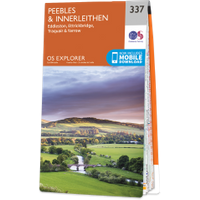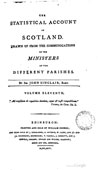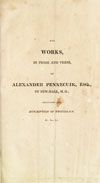

Horsbrugh Castle stands on a prominent hill high above the River Tweed, and was one of a chain of castles along the river.
Named after the Horsbrugh family who owned it, the first mention of them is in 1230, when a Symon of Horsbroc or Simon de Horsbroc witnessed a charter at Melrose Abbey. In 1297 another Simon is recorded as paying homage to Edward I of England, and having his lands confiscated as a result.
In the the 14th century crown rents from Horsbrugh seem to have been paid to the Douglas family of Dalkeith, but by 1479 Alexander Horsbrugh of the Ilk is recorded as the owner of Horsbrugh Castle, at which point the lands were split into Over Horsbrugh (Horsbrugh Castle) and Nether Horsbrugh (Nether Horsburgh Castle).
Some time between 1529 and 1555, John Horsbrugh of that Ilk rebuilt the castle at Horsbrugh and Nether Horsburgh. He may also have been responsible for building Hutchinfield Tower.
Built on an L-plan, only the main block to the west now remains standing, with a section of the projecting wing’s west wall still extending a short distance to the north.
The main block measures around 9.5m approximately north to south by around 10.0 metres east to west, with ruined walls on three sides rising to a maximum height of 6.4 metres. The entire east wall is missing.
The west wall of the wing would have extended 2.5 metres to the north, and would have measured around 4.4 metres across if the rest of it still stood. Within it would have been a spiral staircase.
The walls are relatively thin, maybe 0.7 metres thick, and little of architectural merit remains, save for a narrow slit window on the west wall which would have lit the basement level.
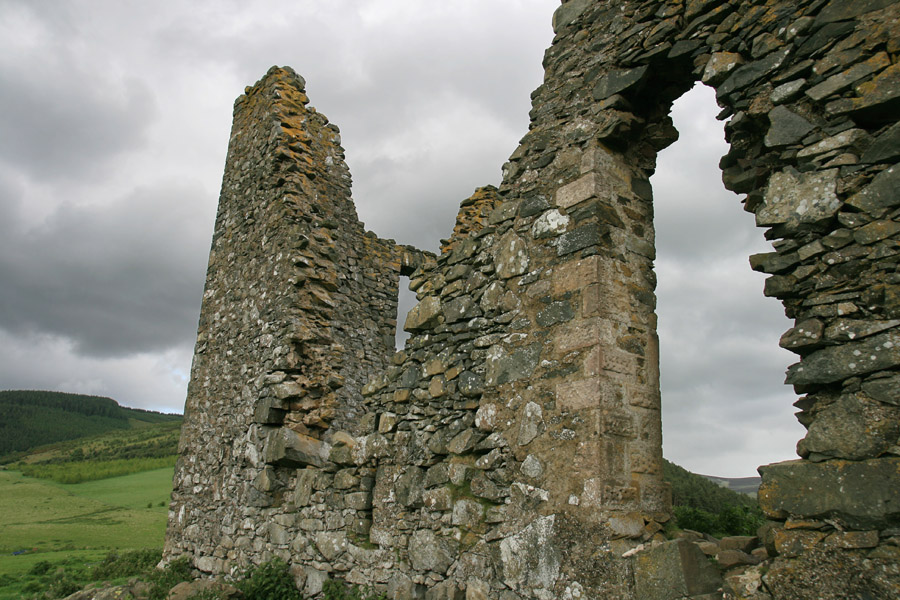
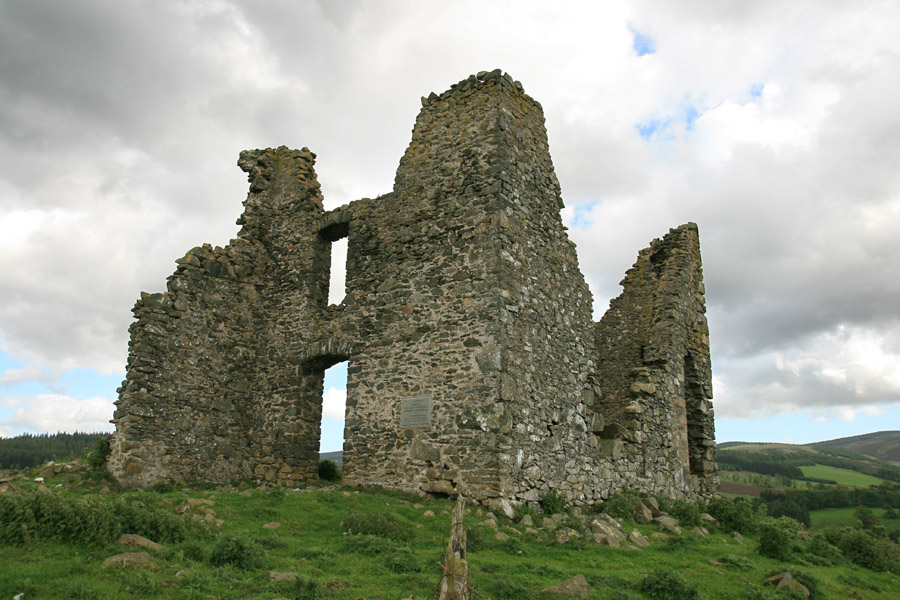
The signal would then pass along to Traquair, Grieston, Ormiston, Cardrona, Nether Horsburgh, Horsbrugh, Haystoun, Peebles and on to Neidpath. From Neidpath it would continue to Caverhill, Barns, Lyne, Easter Happrew, Easter Dawyck, Hillhouse, West Dawyck, Dreva and on to Tinnis.
In the 19th century the walls were apparently “patched up in a rather injudicious manner”, suggesting that some of the original character may have been lost in the name of consolidating the ruins.
The Horsbrughs were hereditary sheriffs-depute under the Lords Yester, but were involved in various disputes in the 16th and 17th centuries and fell on hard times. In 1617 they mortgaged the lands of Horsbrugh to Sir Robert Stewart of Shillinglaw, a relation of the Stewarts of Traquair.
Around 1684 Alexander Horsbrugh married Margaret Tait of the Taits of Pirn, and moved to Pirn House to the east of Innerleithen. This seems to have become the main residence of the Horsbrughs of Horsbrugh. It was demolished in 1950 and the site is now occupied by a school. A William Horsbrugh of that Ilk was made Sheriff-clerk of Fife in 1713.
Members of the Horsbrugh family apparently continued to reside at Horsbrugh over the years, renting from owners that included the Stewarts, the Duke of Queensberry and the Earl of Wemyss. But by the 19th century Horsbrugh Castle was in ruins, and it is now a stark ruin within a sheep field.

Alternative names for Horsbrugh Castle
Horsburgh Castle; Horsburgh Tower; Over Horsbrugh


